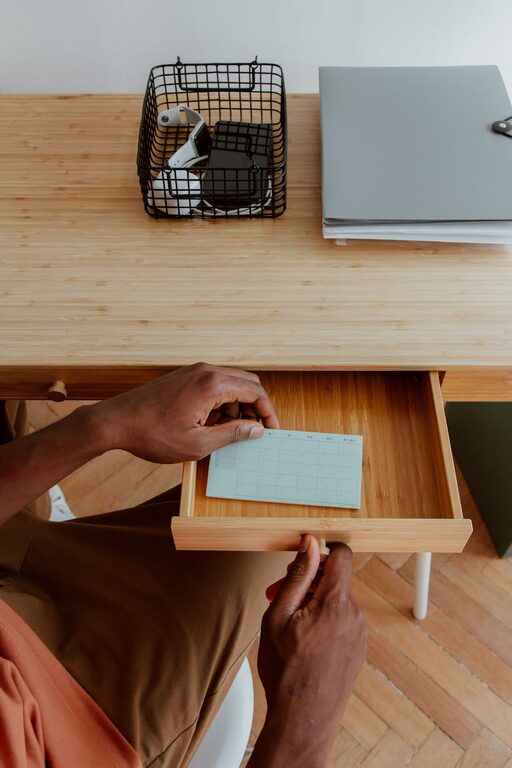Paper clutter can quickly take over a home, making it hard to find important documents and creating stress. The good news is that reducing paper clutter is simpler than you might think. By adopting a few practical habits and organizing tools, you can enjoy a tidier space and more peaceful mind. In this post, we’ll explore straightforward ways to cut down on household paper clutter and maintain an organized home.
Why Reducing Paper Clutter Matters
Paper clutter slows you down when you need documents, bills, or notes. It can also create visual chaos and take up valuable space. Reducing paper clutter helps you:
– Save time finding important papers
– Lower stress and overwhelm
– Create a cleaner, more inviting home
– Support eco-friendly habits by minimizing waste
Step 1: Sort Through Your Papers Regularly
The first step to reducing clutter is sorting through your existing papers.
Create Sorting Categories
Start by setting up several labeled piles or boxes to sort your papers into groups such as:
– Important documents (legal papers, tax records, insurance)
– To-do or action items (bills to pay, forms to complete)
– Reference materials (manuals, receipts for big purchases)
– Junk or unnecessary papers (old mail, expired coupons)
Dedicate Time Weekly or Monthly
Rather than letting papers accumulate, dedicate 15–30 minutes weekly or monthly to go through your mail and other papers. Decide what to keep, file, or discard.
Step 2: Digitize and Go Paperless Where Possible
Digitizing can drastically reduce the amount of physical paper in your home.
Scan Important Documents
Use a scanner or scanning app on your phone to create digital copies of important records. Store these safely on your computer or cloud storage with secure backups.
Opt for Electronic Statements
Switch utility bills, bank statements, and other recurring mail to paperless or electronic versions. This often reduces mail volume significantly.
Use Note-Taking Apps
Replace physical sticky notes or to-do lists with apps on your phone or computer. This helps cut down on scraps of paper and makes notes easier to organize.
Step 3: Set Up a Paper Management Station
Having a dedicated space to handle incoming paper helps stop clutter from spreading.
Choose a Central Location
Pick a spot where all mail and miscellaneous papers are gathered, such as near the front door or kitchen counter. Use a small organizer, tray, or wall file.
Organize Incoming Paper Immediately
Sort mail and papers as soon as you bring them home. Toss junk mail right away and place bills or forms in their action folders.
Use Labels and Folders
Create folders labeled by category, such as “Bills,” “School,” or “Receipts,” so you can quickly file papers without delay.
Step 4: Establish a Filing System That Works for You
A simple filing system ensures papers don’t pile up over time.
Use a Small File Box or Cabinet
Invest in a file box or portable filing system that fits your space and needs. Keep only the essential categories for quick access.
Limit What You File
Only keep documents that are truly needed. For example, retain tax documents for the required number of years, but recycle most junk mail immediately.
Review and Purge Regularly
Every few months, go through the files and remove papers you no longer need. This keeps your filing system manageable.
Step 5: Avoid Printing Whenever Possible
Printing documents often creates unnecessary paper clutter.
Think Before You Print
Ask yourself if a physical copy is necessary or if a digital version will suffice. Many documents can be read and stored electronically.
Use Double-Sided Printing
When printing is unavoidable, printing on both sides of the paper reduces the amount used.
Reuse Scrap Paper
Keep a notepad or clipboards with old, used-once papers for scratch notes, lists, or doodles to get more life out of paper.
Step 6: Shred and Recycle Responsibly
Properly discarding paper clutter is essential for security and sustainability.
Shred Sensitive Documents
Use a shredder for documents containing personal information before recycling to protect your privacy.
Recycle Regularly
Keep a recycling bin nearby for disposing of unwanted papers. Empty it frequently to avoid overflow.
Additional Tips to Maintain Paper Clutter-Free
– Reduce junk mail: Register for opt-out lists to limit the amount of unsolicited mail.
– Use binders for kids’ school papers: Keep important schoolwork in labeled binders, and periodically thin out what’s kept.
– Schedule regular declutter sessions: Set calendar reminders to tidy paper clutter zones quarterly.
– Use apps to manage receipts and warranties: Apps can help you scan, store, and access receipts digitally.
Conclusion
Reducing paper clutter doesn’t have to be a daunting task. By tackling your papers regularly, embracing digital options, and having a clear organizational system, you can maintain a neat home with less stress. Start small with these simple habits and enjoy the benefits of a clutter-free space in no time.

